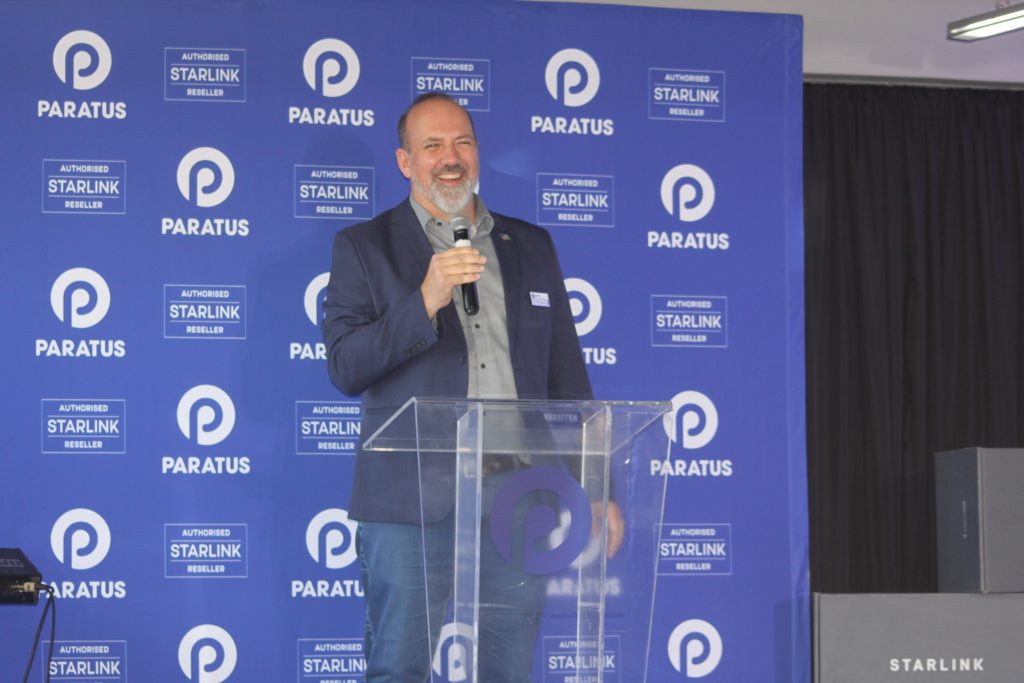
Eswatini’s digital future just got a major boost with the official launch of Paratus Eswatini, a bold new venture formed through a joint partnership between Paratus Group and local ICT powerhouse Real Image, dedicated to delivering high-speed satellite internet using Low Earth Orbit (LEO) technology.
The launch marks the country’s formal entry into the world of LEO satellite internet, starting with the deployment of Starlink, SpaceX’s satellite broadband solution.
Speaking at the launch in Mbabane, Ali Resting, Managing Director of Paratus Eswatini, described the move as a strategic step to expand connectivity beyond traditional fibre networks.
“The terrain in Eswatini presents real challenges to laying fibre everywhere,” he said. “If we don’t embrace new technologies like LEO, which are affordable, quick to deploy, and low maintenance, we’ll continue to leave people behind.”
Paratus Group, a pan-African telecommunications provider with operations in 15 sub-equatorial countries, is well known for its extensive fibre infrastructure. But the focus in Eswatini is different. The emphasis now is on rapid deployment, accessibility, and reliability—strengths of LEO satellite solutions.
“Paratus Eswatini is being established to unlock those alternative technologies, starting with Starlink but expanding into future opportunities with providers like Amazon and OneWeb,” Resting said.
Eswatini Communications Commission (ESCCOM)’s Thulani Fakudze, representing the Chief Executive, Mvilawemphi Dlamini, highlighted the significance of the launch in closing the digital divide. He acknowledged the challenging journey leading up to the licensing of Paratus Eswatini and the complexities introduced by new technologies.

“From our side, we’ve had many discussions and engagements—not as easy as you put it,” Fakudze said. “The technology you’re bringing in comes with a lot of give and take. But we’re happy you’re here now. The ICT sector is ready for the next level.”
Fakudze also encouraged Paratus to make a tangible impact beyond compliance.
“You’re entering an industry with very frustrated consumers. But we believe with your entry, the dynamics are going to change in many aspects. With that, we say thank you, and we want to congratulate you for being part of the family in terms of the players that we regulate.”
Group CEO, Schalk Erasmus, who traveled from Paratus’ Namibia-based headquarters, reinforced the company’s larger vision for the region. “We call it the Paratus 500, a commitment to connect 500 million people in sub-equatorial Africa,” he said.
“Eswatini is not just another market. It’s a critical hub connecting South Africa, Mozambique, and Lesotho, and deserves world-class infrastructure.”
Erasmus emphasized that Paratus doesn’t simply expand; it embeds itself. “We invest in local people, build local partnerships, and develop long-term capabilities. Real Image has been in Eswatini for decades. Their integrity and expertise made them the perfect partner to bring Paratus here.”
Paratus views its presence in Eswatini as more than just a business venture. The company plans to support not only schools but also rural clinics, community centers, and underserved households.

“In Mozambique, we’ve already deployed Starlink in remote villages with great success. The transformation is immediate, from education to healthcare to entrepreneurship,” said Erasmus. “Connectivity is no longer a luxury. It’s infrastructure. It’s an opportunity. It’s dignity.”
Paratus Eswatini arrives at a time when the need for fast, affordable, and reliable internet has never been greater. Its approach, grounded in innovation, community, and rapid deployment, sets it apart from legacy providers.
“We’re not here to offer the same thing with a new name,” Resting concluded. “We’re here to change the game, to bring every corner of Eswatini online and to make sure no learner, clinic, or entrepreneur is left behind.”
